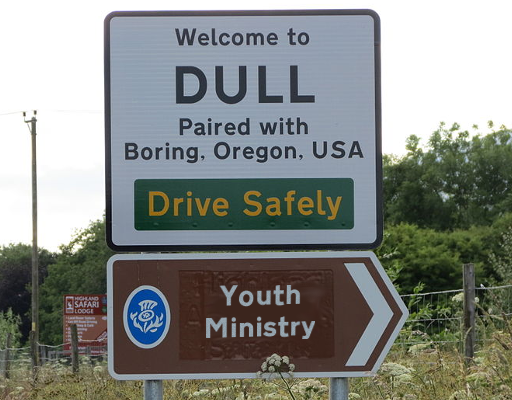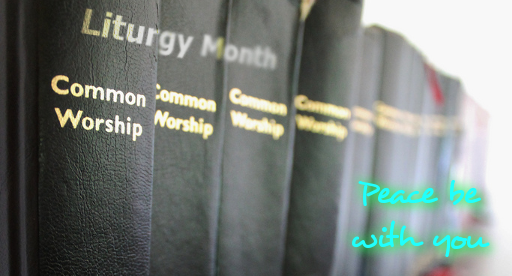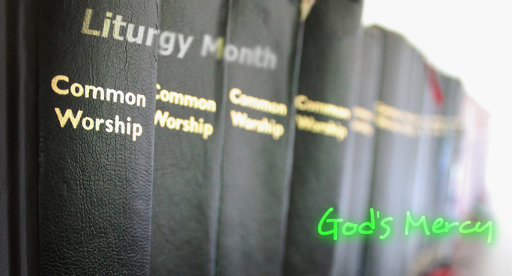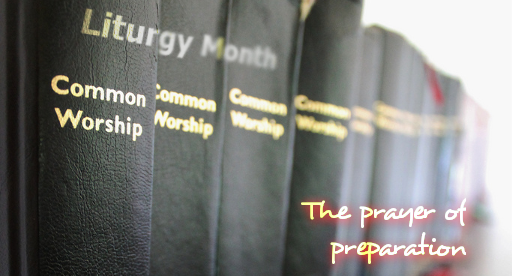Youth ministry has dramatically changed in its format over the past few decades, because ministry as a whole has changed.
It is no longer assumed that people are churched throughout their lives, and so introduction to Christianity courses have had to be made available to adults and students. The Alpha course and similar curricula aimed at seekers have taken an ever larger importance in modern churches. Their story is one of (at least perceived) success. I think the reason behind that is simply that the purpose for these courses is clear and acknowledged: introducing interested people to the core beliefs of Christianity. Both clarity of purpose and acknowledgement thereof are missing from Sunday youth ministry.

Original photo: Peter Mercator, reused under CC License
Are youth ministers meant to provide a broad Biblical education, telling the young ones about a variety of Bible stories (but carefully avoiding Song of Songs or Ezekiel 23)? Or are we meant to provide the spiritual milk that will then allow the young ones to feed themselves? As preachers have stopped assuming the congregation know the Old Testament backwards, the former aim loses relevance, but keeps on being followed because there has been little transition from the former model to a hypothetical new one.
In order to ease that transition, two facts are worth remembering.
1. Youth ministry is not a glorified children-minding service.
That means two things: firstly, that when we approach youth ministry, we shouldn’t ask ourselves how to fill the schedule with things to do for every week. Rather, we should look at this time as an opportunity to do something with the youths. It might be worth taking an Alpha-like approach to youth ministry and have medium-length series to go through. Say, 4 weeks to explain sin and forgiveness; with that cycle repeated as many times as necessary as new youngsters come along; and studies going deeper, still in short or medium-length cycles spanning more than one week.
Secondly, the provision of youth ministry for all, week on week should not be a given. The default should be for children brought to church to stay in church rather than be taken away as soon as the service proper starts. Because unless there is a true purpose to going away with groups, then the children might as well stay with the adults. That way, at least, we might all learn something from what they say. So, say we’re in the third week of that 4-week series with a group of youngsters, and a new family comes to church – or a regular absentee is here for once. There should be no stigma associated with suggesting that they stay in the service rather than go away with the groups.
Similarly, there should be no stigma associated with adults wishing to join in the module (as long as it is from the start); although things such as age-appropriateness and group dynamics need to be kept in mind.
2. What we’re talking about is, in and of itself, exciting. (aka: there is no call for gimmicks)
In educational research, there’s a lot of talk about intrinsic and extrinsic motivation. The aim is generally to teach students to do maths because it is enjoyable and interesting of itself, not because there is a good grade in it for them at the end of it. Now, it is difficult to be excited about the use of a protractor, or about surds or Bidmas (although it is, I’m told, possible).
But what we’re talking about in youth ministry is exciting. It is because it is exciting that we chose to talk about it and share it with the young ones. I love talking about Gideon because I find that I relate to his story a lot and that through it, I find out about my relationship with God. Because I do, I don’t need to start with a silly game when that story is the topic of the week, but I can share this passion.
When we are structuring our session on three tenuously linked pillars – game, chat, God stuff – of course, the latter will appear slightly less fun; and so it will look as though we are ashamed to talk about God (especially if we feel like child minders…). But if the core of the session is the subject matter, then that becomes visibly worth it in itself!
Don’t get me wrong – there is a place for games and chats. Definitely. And this blog has tons of great ideas. But these should only be used when they have a purpose that fits in with the rest of the session: making a specific point more memorable, or explaining a particularly difficult point. Not simply for the sake of making the session more exciting.
Let me put this a different way: if, while planning, I’m asking myself “How do I make this exciting?”, then I’m doing it wrong. What I should be asking myself is “Am I excited about this?”. If not, then I have no place teaching about it. If so, then the planning question is “Why am I excited about it?”
No gimmicks, but personal conviction: that is the way to make youth ministry exciting.




